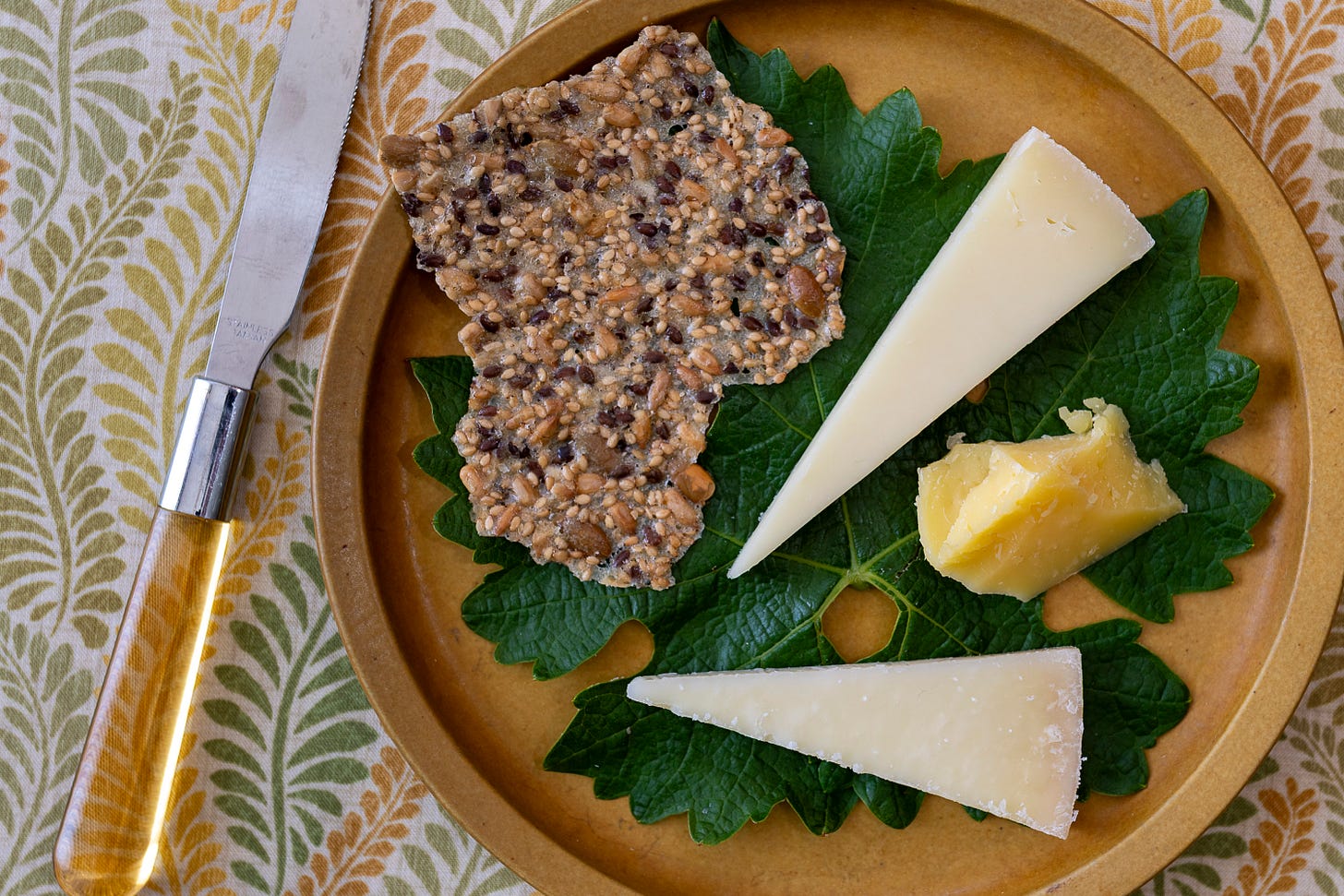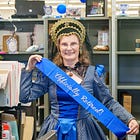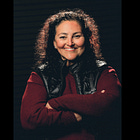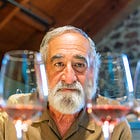NAPA VALLEY, Calif. — There’s a reason my vanity license plate reads I LUV CHZ. For the past quarter-century I’ve been preaching and teaching about artisan cheese, how to buy it, serve it and pair it with wine. But I’ve rarely had the sort of upper-crust audience I had recently, when I was asked to curate the cheese course for the Top Donor Dinner at Auction Napa Valley. The 60 invited guests were a discriminating, wine-savvy crowd, and I knew I had to bring my best game. Where to start?

A cheese plate doesn’t need a theme, but for this occasion a theme was staring me in the face. The dinner hosts, Michelle and Robin Baggett of Alpha Omega Winery, felt strongly about showcasing local. And all the participating chefs were women, so I took that as a hint. I decided that my cheese plate would celebrate California women cheesemakers. No shortage of great candidates there.
"I think of wine and cheese pairing like a tennis match, much more fun to watch when both players are of equal power and skill." — Janet Fletcher
The Baggetts already knew what wine they wanted to pour with the cheese, and — lucky me — it was their flagship red, ERA, from the 2018 vintage. So my cheeses would have a stellar companion. The 2018 ERA is largely cabernet sauvignon, concentrated and powerful, with the dark berry aromas and tannic backbone I expect (and love) in Napa Valley cabernet. What a relief to be playing matchmaker for such an elegant wine and not a massively tannic or jammy red. I learned later that the 2018 Darioush “Darius II” would also accompany the cheeses, but I did not have the opportunity to taste it.
My No. 1 pairing principle is to match intensities. With a fresh, high-acid wine, such as rosé or an oak-free sauvignon blanc — I’ll serve a marinated goat cheese, fresh sheep cheese or mozzarella. As the wine gets more concentrated and intense, the cheese can get bolder, too. You don’t want the wine to overwhelm the cheese or vice versa. I think of wine and cheese pairing like a tennis match, much more fun to watch when both players are of equal power and skill. I want a good volley, not a knockout blow.
Given the nature of this event, I knew the wine was the headliner. I couldn’t serve anything that would undermine it in any way. Sweet accompaniments such as honey, jam, quince paste, candied nuts, or even fresh or dried fruit would be unwelcome on this cheese plate. Initially, I thought about slow-roasted walnuts — a nod to Napa Valley’s agricultural past — but a staffer at Alpha Omega was concerned that tannic walnuts would not play nice with the wine. Scratch that. I decided to select the cheeses and figure out the plate garnish later.
Typically, I think a cheese course should have variety: cow, goat and sheep cheese; a spectrum of flavor from mild to strong; and a diversity of textures. But that’s not where I ended up.
I wanted to stay away from soft, supple cheeses that might slump on a warm Napa Valley night. Stinky washed-rind cheeses (think Cowgirl Creamery’s Red Hawk or Marin French’s new Golden Gate) would do the wine no favors. Bloomy rind cheeses also scared me: If the rind was even slightly ammoniated, it could decimate the wine.
Young cheeses would not have the density or strength this substantial red wine needed. Aged Gouda would be too sweet, like a salted caramel. And blue cheese? Forget about it. Blues are almost always a bad idea with dry red wine, in my view.
After narrowing the options, I landed on these three California selections. All are consistently well-made at creameries with women cheesemakers or women owners.

Toma from Point Reyes Farmstead Cheese: This cow’s-milk wheel, aged three months, is my go-to for any situation. It complements almost every wine type (and almost every beer). Toma smells like warm butter and sour cream and has a gentle, mellow flavor that you can’t not like. It’s the starting point on this cheese plate, the youngest cheese with the most subtlety. Its silky-smooth texture complements the wine’s mouthfeel, as well. The 25-year-old West Marin creamery is operated by three sisters who have built it from scratch into a leading U.S. producer with international reach.
Aries from Shooting Star Creamery: I’m not certain Shooting Star founder Avery Jones is old enough to drink yet, but she made her first award-winning cheese when she was 15. That cheese was Aries, a 7-month-old sheep’s-milk wheel that topped its category the first time it competed in an American Cheese Society judging. Aries went on to place third overall, out of nearly 2,000 entries. Jones’ dad, Reggie Jones, is an award-winning cheesemaker himself and the owner of Central Coast Creamery in Paso Robles. Avery has hung around the family creamery since she was a kid and eventually wanted to develop recipes of her own. At Shooting Star, the focus is on sheep cheese, a rarity in the United States. Avery has just finished college and is headed for graduate school, so Central Coast Creamery manager Lindsey Mendes makes Aries and it continues to impress. Think of it as a Gruyère crossed with a Gouda and you’ll be close. A firm and friable cheese, it has aromas of pineapple and pale caramel.
Estero Gold Reserve from Valley Ford Cheese: Karen Bianchi-Moreda’s son, Joe, makes Estero Gold now, but he learned from his mother. Bianchi-Moreda, who grew up on her family’s Sonoma County dairy farm, was attempting to re-create a cheese she remembered from childhood — the firm, golden wheel her immigrant grandparents always had on the sideboard under a dome. Given their Swiss-Italian origins, they were likely snacking on imported Asiago or Montasio, but Bianchi-Moreda’s creation is closer to dry Jack. Made with raw cow’s milk supplied by Joe’s brother, the reserve is about a year old, dense and crumbly and deeply nutty —a delight with bold red wine.
I’m something of a cheese-course minimalist, believing the cheese can stand alone. This trio wouldn’t need bread as all the cheeses are firm, not spreadable. But I liked the idea of something nutty and crunchy on the plate. Top Seedz, a woman-owned company in Buffalo, New York, produces beautiful shard-like crackers that I find irresistible. They contain no sugar or flour and are as thin and fragile as lace cookies. Lining each plate with a cabernet sauvignon grape leaf added some color and sense of place.
To be honest, I rarely put this much thought into a cheese course. Typically I buy whatever tempts me at the store and we open a wine we’re in the mood to drink. The superpower of a cheese course is that it keeps you at the table longer, an excuse to continue the conversation over another glass of wine.
—
Janet Fletcher publishes the Planet Cheese blog and teaches monthly cheese-appreciation classes at Winston’s Café in Napa.


















Plant-based “cheese” is food, but it is not cheese.
good article Janet, but I don't drink reds.